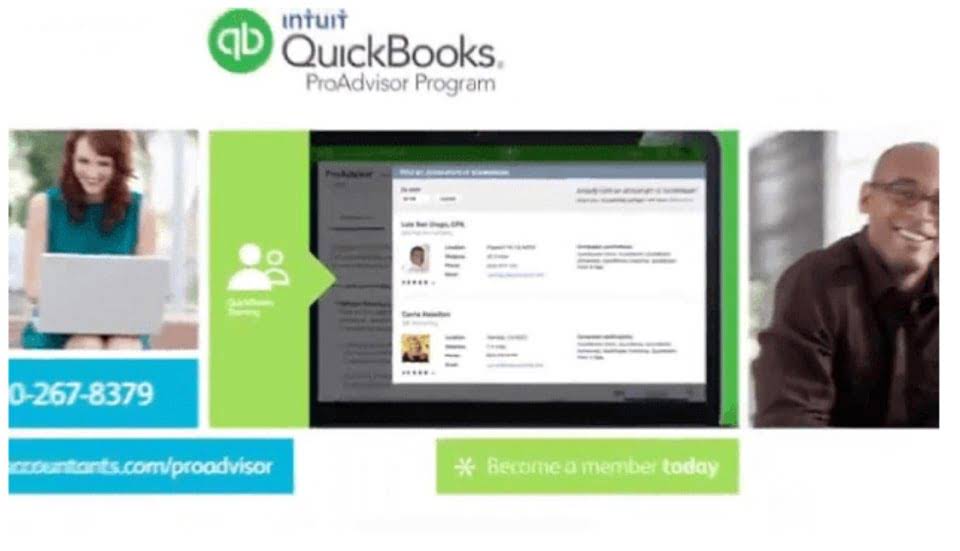Content
An income statement is a financial statement that shows you the company’s income and expenditures. It also shows whether a company is making profit or loss for a given period. The income statement, along with balance sheet and cash flow statement, helps you understand the financial health of your business. The first step in preparing an income statement is to choose the reporting period your report will cover. Businesses typically choose to report their income statement on an annual, quarterly or monthly basis.
Notes receivable are frequently accepted from customers who need to extend the payment of an outstanding account receivable, and they are often required from high-risk customers. A schedule is prepared in which customer balances https://accountingcoaching.online/ are classified by the length of time they have been unpaid. Frequently the allowance is estimated as a percentage of the outstanding receivables. Cash realizable value in the balance sheet, therefore, remains the same.
Balance Sheets
Depreciation expense is recorded for the use of fixed assets (long-term operating resources). Other expenses or losses – expenses or losses not related to primary business operations, (e.g., foreign exchange loss). Other revenues Income Statement vs Balance Sheet Methods or gains – revenues and gains from other than primary business activities (e.g., rent, income from patents). Cost of Goods Sold /Cost of Sales – represents the direct costs attributable to goods produced and sold by a business .
It does not show the flows into and out of the accounts during the period. The three financial statements are the income statement, the balance sheet and the cash flow statement.
In so doing, the MD&A attempt to provide investors with complete, fair, and balanced information to help them decide whether to invest or continue to invest in an entity. A balance sheet or statement of financial position, reports on a company’s assets, liabilities, and owners equity at a given point in time.
Other Comprehensive Income Oci
Income statements include revenue, costs of goods sold, andoperating expenses, along with the resulting net income or loss for that period. The balance sheet is a financial statement comprised ofassets, liabilities, and equityat the end of an accounting period. The percentage of sales method is used to predict the annual sales growth of a business.
- Within an income statement, you’ll find all revenue and expense accounts for a set period.
- This contrasts with the balance sheet, which represents a single moment in time.
- If income is less than expenses, then there is a deficit that must be addressed.
- Additionally, a yearly financial report can contain several balance sheets that reflect the current assets and liabilities backing revenue-generating activities.
- On a balance sheet, a bookkeeper or business owner records the value of a business at a particular time.
- Whatever choices she subsequently made would be reflected in her income statement.
Creating balance sheets is a crucial part of creating an income statement, as it’s how a company gathers data for their account balances. It will give you all the end balance figures you need to create an income statement. If you have several large “other expenses” on the balance sheets, you may notice a downward trend of revenue, sometimes over several years. This can lead to a rising debt-to-credit ratio, as your monetary funds are being improperly allocated. On the other hand, this could simply signify the business is struggling. In this case, the financial statements may not be wrong, but they would certainly signal red flags that need to be paid attention to. In either case, you need to know why these trends exist so you can analyze the root causes and take appropriate action.
Want More Helpful Articles About Running A Business?
On the right side, they list their liabilities and shareholders’ equity. Sometimes balance sheets show assets at the top, followed by liabilities, with shareholders’ equity at the bottom. Often, the first place an investor or analyst will look is the income statement. The income statement shows the performance of the business throughout each period, displaying sales revenue at the very top. The statement then deducts the cost of goods sold to find gross profit.
She most recently worked at Duke University and is the owner of Peggy James, CPA, PLLC, serving small businesses, nonprofits, solopreneurs, freelancers, and individuals. On the other hand, it will have a net loss if all costs and expenses exceed revenue. Essentially, it’s what the business truly earns after considering all costs and expenses.
Shareholders’ equity is the difference between assets and liabilities, or the money left over for shareholders for the company to repay all its debts. Accounting is usually done via one of two methods — cash or accrual. With cash accounting, revenues and expenses are only counted when cash has been exchanged. So with the cash-based accounting method, the effect of the sale is visible on the balance sheet while under the accrual based method, the sale is reflected in the income statement. The income statement, often called aprofit and loss statement, shows a company’s financial health over a specified time period. It also provides a company with valuable information about revenue, sales, and expenses.
Statement Of Changes In Equity
Dividing current assets by current liabilities provides a ratio indicating the amount of cash available per dollar of current liabilities. For example, a current ratio of 2.0 indicates there is $2 of cash available for every $1 of liabilities due during the coming year. Long-term liabilities consist of outstanding debt against long-term assets and may have a term of 20 or more years. Interest and principal payments due within the coming year on this debt are included in current liabilities. Only the amount of debt remaining after the current year’s principal payment is deducted is included in long-term liabilities. Intermediate liabilities consist of outstanding debt against intermediate assets and often have a term of three to seven years. Interest and principal payments due within the coming year are included in current liabilities.
The third part of a cash flow statement shows the cash flow from all financing activities. Typical sources of cash flow include cash raised by selling stocks and bonds or borrowing from banks. Likewise, paying back a bank loan would show up as a use of cash flow. We all remember Cuba Gooding Jr.’s immortal line from the movie Jerry Maguire, “Show me the money! They show you where a company’s money came from, where it went, and where it is now.
Liabilities
You’ll often encounter catch-all line items on the balance sheet simply labeled “other.” Sometimes the company will provide disclosures in the footnotes about what’s included, but other times it won’t. If you don’t have good detail on what these line items are, straight-line them as opposed to growing with revenue. That’s because unlike current assets and liabilities, there’s a likelihood these items could be unrelated to operations such as investment assets, pension assets and liabilities, etc. Moving down the stairs from the net revenue line, there are several lines that represent various kinds of operating expenses. Although these lines can be reported in various orders, the next line after net revenues typically shows the costs of the sales. This number tells you the amount of money the company spent to produce the goods or services it sold during the accounting period. A balance sheet shows a snapshot of a company’s assets, liabilities and shareholders’ equity at the end of the reporting period.
For example, a ratio of .4 means that, if the liabilities are paid, it would require the liquidation of 40% of the assets. The larger the ratio, the larger the amount of assets needed to be liquidated.
Forecasting Shares Outstanding And Eps
Once you understand this methodology, it is up to you to rearrange the different accounts and present them in a way that makes the most sense for your particular needs and your particular business. While basic, it’s worth reminding ourselves that total assets must always be equal to total liabilities . The P&L and balance sheet are interconnected via the equity account in the balance sheet. Any debit or credit to a P&L account will instantly impact the balance sheet through being booked on the retained earnings line. Your cost of goods sold includes the direct labor, materials and overhead expenses you’ve incurred to provide your goods or services. Add up all the cost of goods sold line items on your trial balance report and list the total cost of goods sold on the income statement, directly below the revenue line item. Accountants, investors, and business owners regularly review income statements to understand how well a business is doing in relation to its expected performance, and use that understanding to adjust their actions.
Both use double-entry accounting, which tracks two accounts that either record debits or credits. This means that as a company’s equity increases, reflecting earnings on the balance sheet. If the company doesn’t invest or withdraw from the equity, it turns over to the income statement. The balance sheet displays what a company owns and owes , as well as long-term investments.
Some income statements show interest income and interest expense separately. The interest income and expense are then added or subtracted from the operating profits to arrive at operating profit before income tax. A company’s balance sheet is set up like the basic accounting equation shown above.
The Balance Sheet Vs The Income Statement
US GAAP includes basic underlying accounting principles, assumptions, and detailed accounting standards of the Financial Accounting Standards Board . Knowing the difference between a balance sheet and an income statement while keeping your eye on your business’s cash flow is the fundamental ingredient to maintaining solid finances and promoting business growth. However, even the healthiest businesses need an emergency infusion of cash now and then. Having a cash backup plan in place means your business can afford to replace a crucial broken piece of equipment or expand offices to accommodate new business. The market approach derives value primarily from information taken from a company’s income statement and statement of cash flow.
Objective Of Financial Statements
Nontrade receivables including interest receivable, loans to company officers, advances to employees, and income taxes refundable. Nonrecurring cash flows that result from the borrowing or repayment of debt, or from the issue or repurchase of equity. Alice’s net ncome, or net earnings or personal profit, is the remaining income after all other expenses have been deducted, in this case $6,040.
How To Read An Income Statement
From there, the gross profit is affected by other operating expenses and income, depending on the nature of the business, to reach net income at the bottom – “the bottom line” for the business. Commonly, businesses include operating and nonoperating expenses, including administrative costs, COGS, utility expenses and wages for staffing. If equity turns over from the balance sheet after one year, it may also appear on the income statement as part of a company’s net income.
Shareholders’ equity is the sum of total assets minus total liabilities and is helpful in calculating a company’sfinancial health. Shareholders’ equity represents the net value or net worth of a company, which for Apple was $134 billion. This is the money left over for shareholders, assuming the company was to pay off all liabilities in the event of liquidation. The income statement (a.k.a the statement of financial performance) is a financial statement that provides us with information regarding a business’s financial performance for a given period. On a balance sheet, a bookkeeper or business owner records the value of a business at a particular time. Since it includes assets, liabilities, and investments, a balance sheet can offer an overview of what the business is worth at a specific date.
These include sales and the various expenses incurred during the stated period. The first part of a cash flow statement analyzes a company’s cash flow from net income or losses.
Value derived under the cost approach generally omits intangible value, so this estimate can serve as a useful “floor” for a company’s value. Appraisers typically use another technique to arrive at an appraisal that’s inclusive of these intangibles.
The market approach provides an estimate of the value of the net worth if the business is liquidated on the date of the statement. Over time, the value of the net worth using this method will change based on changing asset prices and the amount of profits retained in the business. It shows the company’s revenues and expenses during a particular period, which can be selected according to the company’s needs. An income statement indicates how the revenues are transformed into the net income or net profit.
The balance sheet reports assets, liabilities, and equity, while the income statement reports revenues and expenses that net to a profit or loss. The income statement also notes any tax expense, while the balance sheet contains any unpaid tax liabilities. A small business income statement shows the total revenues and expenses for a specific period of time, such as weekly, monthly, or annually.



